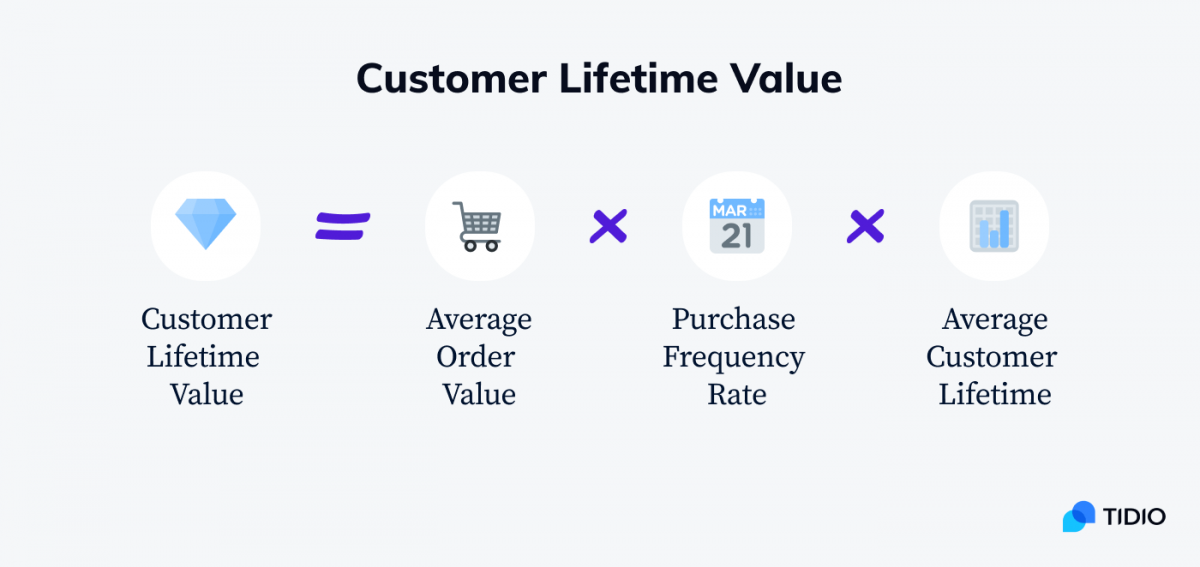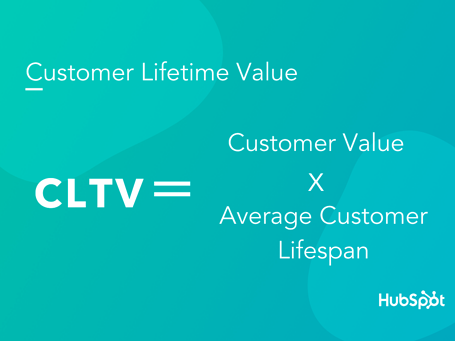By comparing the ltv of a company to the cost of customer acquisition, it can calculate the value of a. From the lifetime value, companies can derive an ongoing revenue stream to sustain the.

What Is Customer Lifetime Value? [Formula & Examples]
Customer lifetime value = (customer value * average customer lifespan) where customer value = average purchase value * average number of purchases.

Lifetime value calculation. Customer lifetime value = customer value x average customer lifespan. As with method five, this formula leverages discount rate, margin, and churn (the opposite of retention in method five), but leverages growth ratio. For example, your monthly churn rate is 10%, then the average lifetime period can be calculated as:
According to marketing metrics, there’s a. Using a simple example, if a customer purchases $1,000 worth of products or services from your business over the lifetime of your relationship, and the total cost of sales and service to the customer is $500, then the ltv. The takeaway is that for this hypothetical company, one customer is expected to generate a total of $640k in profits throughout his/her entire lifespan as a customer.
This calculation can be done by subtracting the customer's acquisition costs from his/her lifetime value, which determines a company's total profit. Since the lifetime value of a customer is calculated in gross revenue terms, it does not take operating expenses into consideration. As year six is a reasonable distance into the future, the customer lifetime value calculation reduces it to $50 (as an equivalent to today’s money for the organization).
Thus, multiply the customer value by the average customer lifespan that the business has. Clv = cv x acl. (average value of sale) x (number of transactions) x (gross margin) x (retention time period)
If you want to know how to calculate your customer lifetime value, feel free to experiment with our ltv calculator. There is a 30% cycle over cycle churn rate and hence the retained customer percentages are 100%, 70%, 56%,. $2,000 (acquisition cost) = $3,000 = clv.
Average lifetime = 1 / churn rate. So, if the mrr is $100, then the clv is $1,000. That answer is the customer lifetime value.
The lifetime value of a customer is the average amount of money that a customer pays for goods or services over their lifetime. Once we get the average lifetime period calculated, then we can calculate the clv by multiplying by the mrr. Customer lifetime value = average value of a sale x number of transactions x retention period x profit margin.
How is customer lifetime value calculated? The customer lifetime value of this customer would be: One way to analyze acquisition strategy and estimate marketing costs is to calculate the lifetime value (“ltv”) of a customer.
Roughly defined, ltv is the projected revenue that a customer will generate during their lifetime. In summation, here are the equations any manager needs: 1 / 0.1 = 10.
$1,000 (annual profit from the customer) x. This result will help you determine how much revenue you can expect from each customer as long as they are patrons to your business, that is, for the duration of their customer lifespan. (average annual customer profit) x (average duration of customer retention) however, in order to calculate even this formula, a basic component breakdown is below:
Lifetime value calculation is the process by which a business measures the value of a customer to the business through the customer’s full lifespan. You can also derive the average revenue per user or the average length of your customer relationships you would need to hit a target ltv. The most complex formula for calculating cltv is method six.
So it is 10 months. There are two models that companies will use to measure customer lifetime value. You already know your company has a churn rate of 10% and an arpu of $30.
Lifetime value (ltv) = $16k gross contribution per customer ÷ 2.5% monthly churn; Customer lifetime value or ltv is one of the metrics used to measure the growth of a company. The customer lifetime value (clv) ratio or the clv to customer acquisition costs (cac) ratio is calculated by dividing clv by the cac.
The growth ratio is the amount of increase over time as a percentage of its previous value. Using the first formula, we get: Therefore, effective customer values generated are $10, $7, $5.6,.
If you’re using the net margin to calculate clv, your clv should be three times greater than the acquisition cost. Customer value = average purchase value * average purchase frequency rate. Just multiply your average purchase value with your average gross margin, purchase frequency, and customer lifespan.
Customer lifetime value is the total amount a customer will spend if you retain them. As shown in the table, the subscription product makes $10 value out of a customer each billing cycle. To figure out how much you should invest, you need to calculate the customer lifetime value for your business.
In the simplest form, ltv equals lifetime customer revenue minus lifetime customer costs. Customer lifetime value is the product of customer value and average customer lifespan. 5 (number of years that they are a customer) less.
Use our handy ltv calculator below to work out the lifetime value of your users. 10 * 100 = 1,000 As an equation, it looks like this:
Cost to acquire the customer = $2,000. Lifetime value = average value of sale × number of transactions × retention time period. Once you have the above information, calculating clv is easy.
At its simplest, customer lifetime value is customer profit over time: Customer lifetime value = customer value x average customer lifespan how to improve lifetime value Keep reading for some real examples.
Customer lifetime value = customer value * average customer lifespan For cycle 1, 2, 3,. Let’s look at two examples so we can understand clv better.
To accurately evaluate the net benefit over time, you need to factor in the cost of acquiring the customer and the cost of serving their needs throughout their journey. Finally, subtract your cost of acquisition. In this graphic we’ll briefly cover how to calculate ltv and how to use ltv to help solidify your marketing budget.
ads
